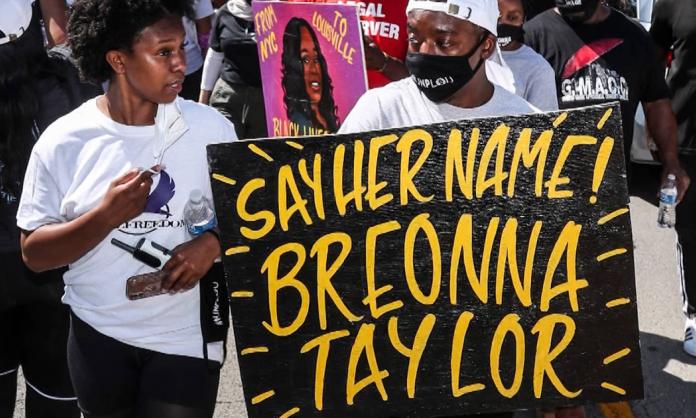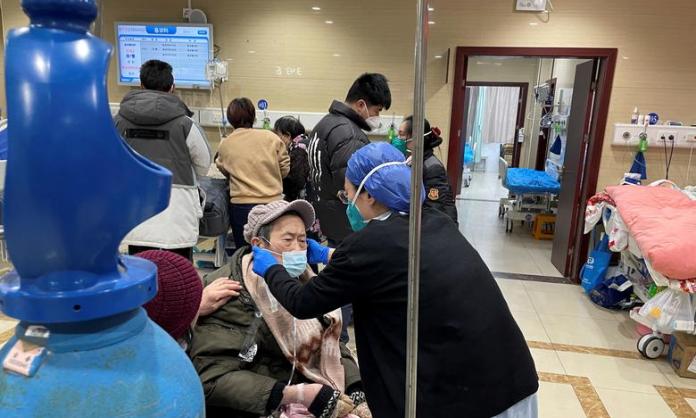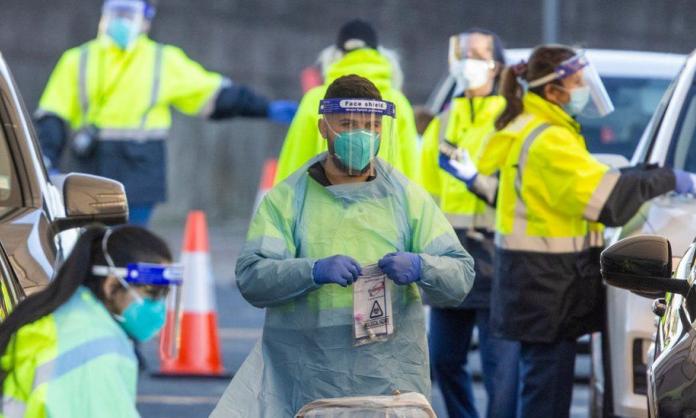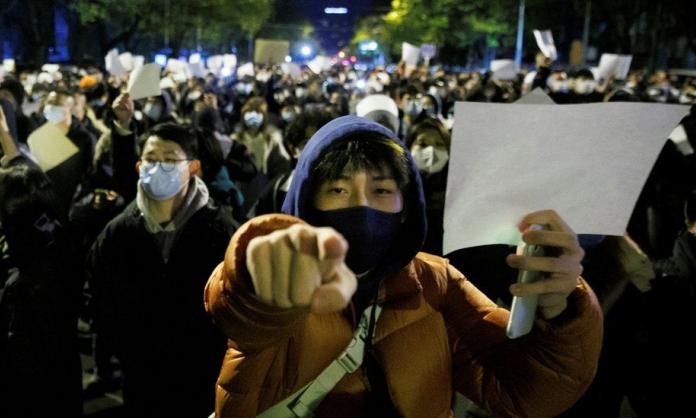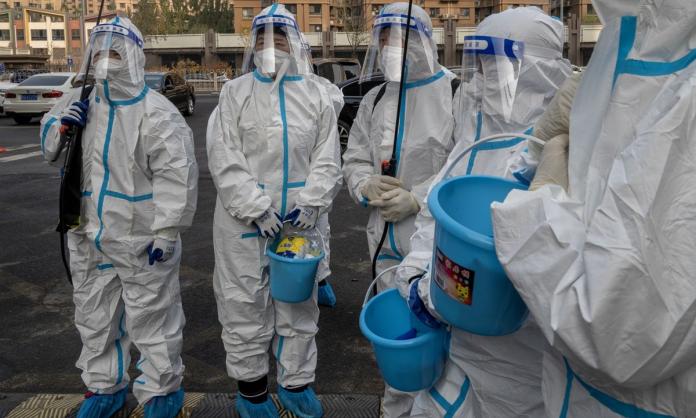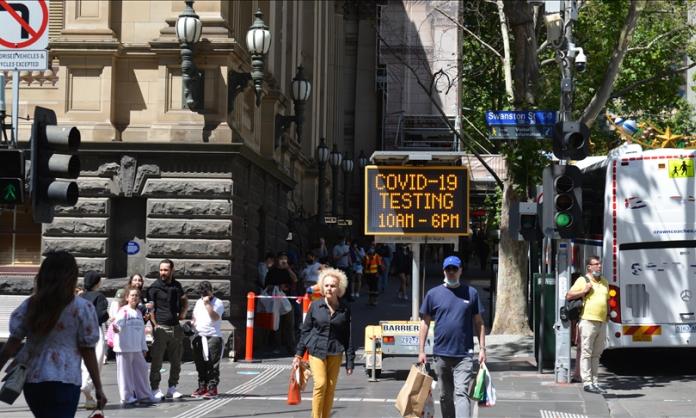COVID-19 is pushing an already crisis-racked system to breaking point. More than one million people so far have died from the virus. In places where it seemed contained, such as Europe and Singapore, it is now resurging. In many other countries, including the US, Iran, India and across Latin America, it was never contained to begin with.
Almost everywhere, governments have utterly failed to rise to the challenge posed by the pandemic. They have proved incapable of putting human life before profits, finding themselves hamstrung by an international market system geared towards private gain rather than cooperation. Even where robust health measures have been implemented, there has been impatience to unshackle economies from the restrictions to get back to business.
The economic impact has indeed been profound and has exacerbated pre-existing structural problems in the world economy. In contrast to the 2008 global financial crisis—which was primarily a crisis of the US-European economies—the current crisis is genuinely global.
While there was initially hope for a “V-shaped” recovery, these hopes have largely turned to dust. The International Monetary Fund’s World Economic Outlook for June predicts that global growth will be -4.9 percent for 2020, 1.9 percent lower than its April prediction. This will mean a massive restructuring of the world economy, with multinational companies shredding hundreds of thousands of jobs, closing down or cutting back on unprofitable production chains and condemning millions to poverty.
To make matters worse, the economic relief that was provided for ordinary people in some countries early on in the pandemic is starting to be cut back. In Europe, it is predicted that up to 59 million workers are at risk of cuts to hours or pay, temporary furloughs or permanent lay-offs when government stimulus ends over the coming weeks. In the US, unemployment claims reached a record high of 7 million in April before falling back a bit. Since August, they have been sitting at around 800,000 per week.
At the same time, the rich continue to be given enormous handouts and accrue profits at a startling rate. US billionaires increased their total net wealth by $637 billion in the first five months of the COVID-19 crisis, but this hasn’t stopped Congress approving yet more corporate stimulus.
The health and economic crises COVID-19 is creating are not the only problems facing world capitalism. The impending disaster caused by climate change, which has been largely overshadowed for most of the year, has come roaring back into focus in the massive Californian wildfires. Faced with a crippled world market, capitalists are doubling down on what is already profitable: fossil fuels. The much-touted “gas-led recovery” in Australia is just one example. The idea that sections of the corporate elite could be won to seriously transitioning the world economy to renewable energy, a long shot even before the pandemic, is a naive fantasy today.
Imperialist tensions, bringing with them the potential for war, have also intensified in the COVID-19 era. The long-term rivalry between the US and China has been brought more into the open, threatening the stability of the world system. Rarely does a week pass these days without a new feud, ranging from the ridiculous—such as Trump’s attack on social media platform TikTok—to more serious threats like that of decoupling the two economies, sabre rattling over disputed territories and the expulsion of foreign agents, whether real or imagined, on both sides.
And it’s not just the conflict between Beijing and Washington that is heating up. Saudi Arabia, the UAE, Israel and the US are strengthening ties to isolate rivals such as Iran. Turkey and Greece are enmeshed in a stand-off over gas supplies in the Mediterranean, with the European Union strongly backing Greece. And in June, tensions over the disputed border between China and India briefly led to fighting between the two for the first time in 45 years. As the crisis rolls on, conflicts like these are likely to become more frequent and bitter.
The political class is not well placed to navigate a more tumultuous world. The legitimacy of the traditional rulers of many countries was already bruised and their authority shaken well before 2020 hit. US politics, always a somewhat unstable affair, had become sharply polarised with the election of Trump. Europe had only just emerged from years of economic instability and political volatility that at its height had threatened to tear apart the EU. The Middle East was still dealing with the aftermath of the defeat of the Arab Spring and the rise of the Islamic State. China’s expanding influence was temporarily checked by the mass protests in Hong Kong. Rebellions in places as diverse as Chile, France, Lebanon, Iraq, Catalonia, Sudan, Algeria and Ecuador emerged repeatedly over the course of 2019.
This rising discontent reflects the changing relationship between the ruling classes and the working masses. In the aftermath of the global financial crisis, there was concern about how much the established institutions that help give capitalism legitimacy—the parliaments, the media, the political parties and so on—had become disconnected from the mass of the population. More recently it became less a matter of ruling over a disillusioned but ultimately passive population, and more one of facing streets filled with hundreds of thousands of people demanding serious changes to the structure of society. The arrival of COVID-19 briefly interrupted this development—indeed in the initial months of the crisis, many governments’ approval levels skyrocketed—but now it is back with vengeance.
In Belarus there have been weeks of mass demonstrations against Alexander Lukashenko, who has been in power for 26 years. This rebellion has spilled over into workplaces, with strikes and workplace committees being established even in the traditionally pro-government state-owned industries. Despite significant repression, hundreds of thousands have continued to protest every weekend in the major cities. “The society has entered a point of no return”, noted one commentator, “and this is widely understood”.
In Iran last November a wave of protests and strikes spread to more than 160 cities and led to more than 7,000 activists being arrested. This discontent has now intersected with the failure of the Iranian government to contain COVID-19, leading to a massive strike wave involving workers in textiles, oil, gas and petrochemical production, telecommunications, manufacturing, universities and municipalities. Anti-government protests by students and workers in many cities have been explosive and widespread; one report estimates there has been a 227 percent increase in the number of protests since March, compared to the same period last year.
In Thailand a significant pro-democracy movement has arisen after the years of defeat following the 2010 massacre of the Red Shirt movement. Tens of thousands of young people fed up with the authoritarianism of the regime—as well as the ineffectiveness of the official opposition—have flooded the streets. While COVID-19 hasn’t been as bad in Thailand as in other countries, the attempts by the government to use the pandemic to ban demonstrations has caused widespread anger.
And, of course, the US has seen the biggest wave of mass protest since the civil rights movement of the 1960s, with at least 7,750 different Black Lives Matter protests taking place between May and August. Demonstrations have erupted again recently in response to the refusal to charge the police who murdered Black woman Breonna Taylor.
These are only some of the most significant expressions of discontent over the last six months. There are many other examples: in Mali strikes and protests led to a military coup against the government; in the Ivory Coast there have been months of protests against the dictator there; in South Africa there have been protests by health-care workers and calls for significant strike action. In several Latin American countries, there have been pandemic-related demonstrations, including a 48-hour strike of health-care workers in Peru and rioting and then a general strike in Colombia against police brutality. Europe has had a number of anti-racist demonstrations, Extinction Rebellion protests have returned to the streets of London, and the Yellow Vests in France had another day of protests on 12 September. According to political analytics firm Verisk Maplecroft, “The fallout from the pandemic is going to worsen basic inequalities and act as a catalyst for further unrest. An escalation of unrest is now inevitable”.
A noticeable development within many of these movements is the growing recognition that, if they are to succeed, they will have to move beyond mass street protests, important though those are. Even in places were working-class organisation and traditions are much weaker, there has been some understanding that, for these rebellions to go forward, they will need to disrupt the economic power of the elite. Hence the attempts in Catalonia and Hong Kong to occupy airports and other business centres. Last year in Chile and France, strikes by workers were key to rebellions, even if the level of organisation and politics was insufficient to develop to the point of mass general strikes. This year in Belarus and Iran, action in the workplaces has been an important element of the movement, rather than workers just joining large street protests as individuals.
This is significant given that in the decade after the global financial crisis, when street protests such as the occupation of the squares in Europe or Occupy Wall Street reached a limit, the next step tended not to involve workplace activity but rather various left-wing electoral projects: Podemos, Syriza, Corbyn and Sanders, for instance.
It is noticeable this time how the idea of a general strike has tended to arise relatively spontaneously, revealing that there are layers of activists everywhere grappling with the nature of class power in modern capitalist society.
A major problem is the state of the socialist left, which is everywhere very weak or moving to the right. The Social Democratic and Labour parties have moved sharply rightwards and expunged any serious oppositional currents. The Stalinist Communist parties have mostly collapsed, and even the genuine revolutionary left has been isolated. Many of the new left-wing organisations that emerged out of the 2008 crisis were so focused on electoralism that they have been unable to adapt to the radical shift in the situation. A radical left oriented to the politics of mass struggle is desperately needed to meet the challenges of the coming period.
Discontent will only grow, but this doesn’t guarantee easy victories for the oppressed and exploited. Governments everywhere are strengthening the forces of repression, the already present tendencies towards authoritarianism are increasing, and in the chaos of the crisis all sorts of extremely barbaric and reactionary forces can emerge. At the grassroots level though, a new generation of radical activists is being forged in the public squares, city streets, universities, high schools, factories, office blocks and transport hubs of the world. We are, in the words of US poet Walt Whitman, “between things ended and things begun”.




